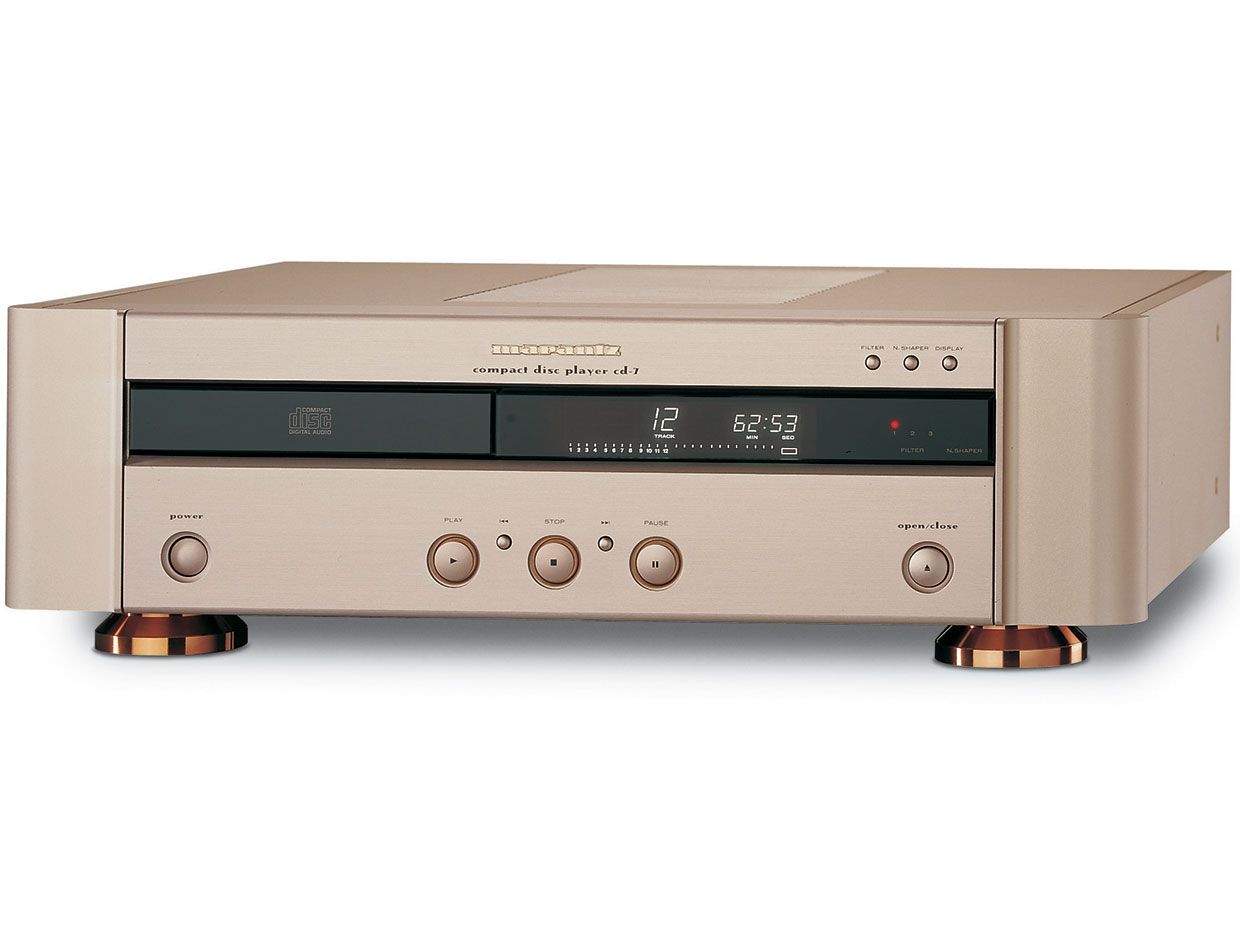The Consumer Electronics Hall of Fame: Marantz CD-7
A project to build the ultimate CD player hinged on the design of a low-pass filter
There are a handful of perfumers who can identify each of the several dozen scents blended into a high-end perfume. The video industry, meanwhile, hires people who can look at whatever is being depicted on an 8K display and detect if image fidelity is marred by just a few thousand errant pixels out of the approximately 33 million in each frame. Their perceptions can be objectively verified.
And then there are audiophiles. Some of them say they can hear the difference between silver and copper hookup wire in an audio amplifier. They posit traits such as “warmth," “dryness," and “darkness," which are difficult to explain, let alone quantify, and they can argue about these parameters as if they were divvying up Alsace and Lorraine. So when audiophiles agree unreservedly on the quality of some specific piece of sound-reproduction equipment, odds are that that machine is a stellar example of whatever it is. Such is the Marantz CD-7 compact disk player, a nearly complete redo of the CD-15, the Marantz system that preceded it to market.
A bedrock principle of the digital era is that things get better with technological progress, and so it was with Marantz CD players through the CD-15. Indeed, the CD-15 was initially hailed. But before long, the dissent began. Some audiophiles found it “too high fidelity." Whatever that means. Marantz engineer Ken Ishiwata, who had worked on the CD-15, was among those dissatisfied with it. Ishiwata went to work on a new model that rejected the nominally more advanced digital-to-analog converter (DAC) chip used in the CD-15, the one-bit (bit-stream) TDA1547, in favor of an older model, the 16-bit TDA1541, which had been used in several Marantz models well before the CD-15. Ishiwata knew that if the older chip, the TDA1541, was used with care it could deliver remarkable sound.
Ishiwata told IEEE Spectrum his idea was to pair the older DAC with a superior filter. Unconvinced of the quality of the long FIR (finite impulse response) filter used in the CD-15, Ishiwata decided to “maximize the wonderful power and timing of music" by creating his own filter. To understand what he did, and why, requires a bit of tutorial.
A CD player does not merely take the digital samples from a compact disc and send them to the DAC for conversion to an analog waveform. It uses a process called interpolation, in which additional samples are created and inserted in between the “real" samples to produce a higher sampling rate. This process increases the sampling rate by, typically, a factor of 4 or 8. Interpolation, also called oversampling or upsampling, has the benefit of greatly easing the demands on the low-pass filter that follows the DAC, and which is needed to remove some high-frequency artifacts created by the DAC that would otherwise reduce the sound quality.
In the CD-15 the TDA1547 DAC was paired with a filter (SM5803APT, from Nippon Precision Circuits) that provided 8 times upsampling. To create the superior filter Ishiwata wanted for his new disc player, he began by extracting the source code of Philips's SAA7220 digital filter chips. He then added some custom code, and ran it all on a pair of Motorola 56000 digital signal processors that he'd yoked together (and dubbed the Double Crown). That configuration allowed him to revert to 4X upsampling, which some audiophiles insist provides better audio quality than 8X upsampling (at least when comparing those two specific Marantz models).
Ishiwata's tinkering on the CD-7 didn't end at the circuitry. The mechanism in CD players that incorporates the lasers and lenses used to read a disc is called a transport. A CD player's accuracy reading discs is dependent on the quality of the transport. Marantz's preceding model, the CD-15, was also lauded by audiophiles for its use of Philips's CDM4 Pro, one of the highest-quality CD-player transports ever created. Philips had stopped making it by the time Ishiwata was designing the CD-7, however. Ishiwata was dissatisfied with the widely available replacement (designated the CD12.3), though, so he and Marantz essentially rebuilt the CD12.3, including, by one account, diamond-milled stainless-steel slide bars for luscious disc loading.
The resulting CD-7, introduced in 1998, looked like other Marantz players in that it had the stylish and balanced faceplate design and the characteristic champagne-gold finish. But it was hailed immediately for providing sound quality as good as anything found in recording studios, including what one reviewer called “unsurpassed rhythmic intensity." Whatever that means.
Brian Santo is the editor of CED magazine and a former Spectrum staffer. “Whenever Intel chooses to enter a market, there’s enormous potential for them to create fundamental changes in that market,” Santo says, explaining why Intel’s Larrabee chip was named this year’s semiconductor winner.
